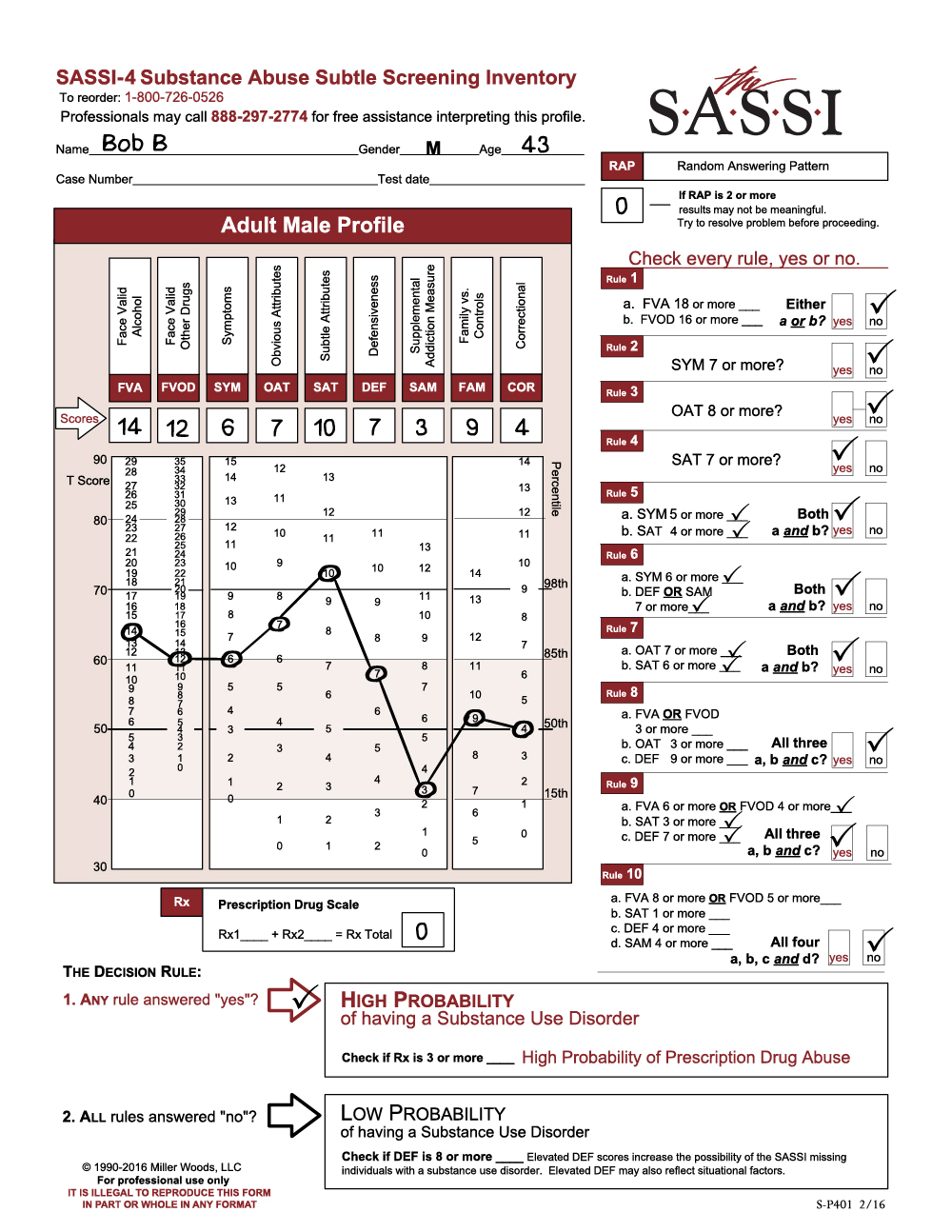Bob is a 43-year old male who was referred by his attorney for a substance evaluation following a traffic fatality in which he was driving under the influence. Bob seems to have understood the items and responded in a meaningful way (RAP = 0). There is no significant evidence that Bob was defensive (DEF = 7).
The most salient feature of the profile is the significantly elevated SAT score, which is a key feature in both decision rules that lead to a test positive on the SASSI (Decision Rules 4, 5, 6, and 7). His responses were highly similar to substance dependent individuals regardless of their ability or willingness to report symptoms relevant to substance misuse. Given the lack of evidence of defensive responding, it’s likely that Bob falls in the category of those who are unaware of the full impact of substance use problems in their lives.
Individuals with this configuration of scores are often willing to acknowledge some behavioral problems related to their substance use. Bob demonstrates this by acknowledging significant current and/or past alcohol (FVA=14) and drug (FVOD=12) use. His pattern of responding also indicates some awareness of behavioral problems that are commonly associated with individuals with substance use disorders: low frustration tolerance, self-centeredness, grandiosity, etc. (OAT=7). However, given the elevated SAT, he will most likely not be able to make any connection between his acknowledged use and behavioral problems and their impact on other areas of his life.
He also responds in a fashion similar to individuals who live in an environment dominated by substance abuse (SYM=6). Although the SYM is not extremely elevated, it does tend to support the notion that Mr. B. may view his substance use as normal. Further content analysis may reveal additional factors about his life circumstances that might be important to consider in treatment planning.
Bob may be relatively well presented. He may also appear to be emotionally detached while maintaining a sense of pragmatism regarding his situation. Relatively poor insight and self-awareness are commonly present in these types of profiles. It’s not that Bob refuses to understand or is intentionally resistant; he literally doesn’t grasp that his substance use may be a problem that requires further exploration. In his mind, external factors or stressors may be to blame for his current predicament. The possibility that this tragic incident may be directly related to a substance use problem would be quite difficult for Bob to understand at this time.

